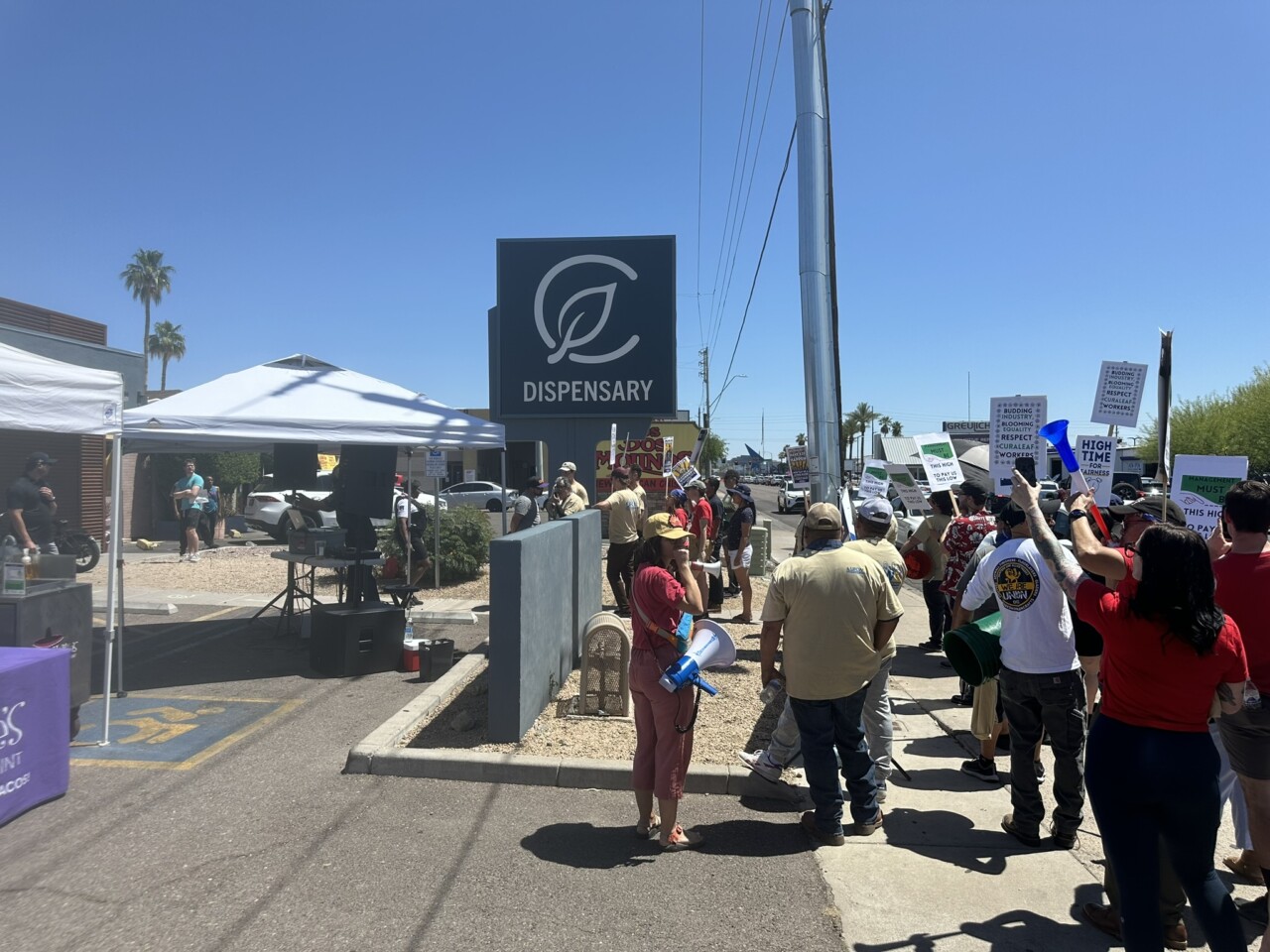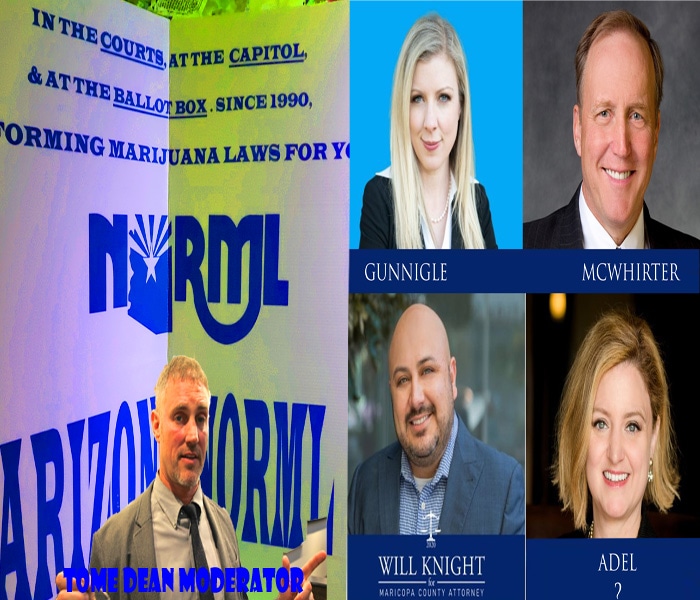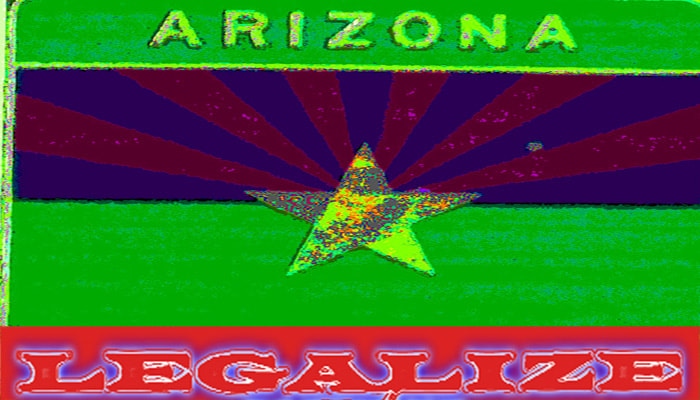By Mikel Weisser
(Originally published by Blazed420 magazine in their Dec./Jan. issue)
Without a doubt, the creation of cannabis prohibition is one of the darkest and longest examples of American corruption at its worst.
Every arrest, every imprisonment, every drug deal gone south, every kid getting sick on “spice,” every SWAT team assault, every job lost to a piss test and every cop thrusting his nose in your business to sniff for probable cause extends the injustice of the original corrupt act of making cannabis illegal. Since the 1960s, America’s prohibition of cannabis has pushed the entire world into a state of reefer madness. So far, more than twenty million Americans have had their lives destroyed by arrest and prosecution for a plant that some speculate has been a part of human existence since the dawn of man.
Somewhere in our country an American is arrested for Marijuana use every 37 seconds. Each year, here in Arizona, over 16000 people are arrested for cannabis charges. This year between federal and state law enforcement costs, Americans will spend over $37 billion dollars funding our country’s war against its own citizens. Only now, after decades of legal and electoral battles is hope on the horizon that the horrors of prohibition will end at last.
Arizona currently has some of the strictest marijuana laws in the nation; but is also widely regarded as one of the top states likely to vote on ending prohibition next election. As the 2016 election cycle heats up, many people in Arizona are attracting to the ballot measure campaigns to legalize cannabis, or marijuana, for adult use, reversing the nearly 80 year prohibition against cannabis in America. So the question comes up:
Why Is There a Prohibition Against Cannabis In The First Place?
When Shouts of Joy Were Frowned Upon
First thing to keep in mind is that it was not always so. American Cannabis Prohibition is a comparatively short period in the otherwise uninterrupted relationship between the plant and mankind that goes back all the way back to the dawn of civilization. Throughout recorded history, cannabis had been a staple in human agriculture. With the earliest written records of cannabis use going back nearly five thousand years, Carl Sagan, the famous astronomer and unabashed cannabis enthusiast, even speculated that early man’s relationship with cannabis led to the development of agriculture and thus civilization itself.
While that may be never be determined, written records document Chinese use of cannabis for medicines date back to 2700BC and there is evidence that the Chinese developed hemp rope making technologies as far back as eight thousand years ago. Hemp paper, hemp fabric, hemp fuel oil and hemp for food soon followed. Hemp rope and fabric, known as canvas, was so common the US government claims that that “up until the 1850s, almost all the ships sailing the western seas were rigged with hemp rope and sails.” Though most of cannabis’ multiple uses were widely accepted and the plant became a key crop for many agricultural economies, the plant’s medicinal properties proved to be a bit more controversial.
As its cultivation spread westward, Chinese, Indian Ayurvedic and Middle Eastern cultures all embraced cannabis as medicine, but also all took note of its psychoactive properties. Ancient Indian legend tells that the cannabis plant grew from the nectar of the gods and it could heighten courage, enjoyment and sexual desire. Chinese and Indian Hashish preparations go back thousands of years and were typically eaten, though the Scythians of ancient Eurasia created “vapor baths,” tents filled with smoke that caused celebrants to “shout w joy.”
In cultures where shouts of joy were frowned upon, cannabis use was soon restricted on religious principles. In 1378, Islamic leaders attempted to restrict its use by the general public, though they allowed for religious groups to continue using it as a sacrament. The modern word “hashish” itself comes from tales of a secret society of religious assassins who used the drug as a motivator so they could experience the pleasures of heaven before risking their lives on deadly assignments. Hashish is also why the legendary “whirling dervishes” whirled.
Despite, or perhaps because of its psychoactive and other medicinal effects, over the millennia, cannabis as a crop spread worldwide and grew as a medicine to be part of the “pharmacopeia,” or list of products considered “medicine” of most medical traditions, including the US starting in 1850. As a cash crop, cannabis, or hemp had already been part of American culture since day one. The first laws in the English colonies required farmers to grow cannabis or hemp.
An American Tradition
There are numerous legends and myths regarding early American leaders and cannabis, but experts tend to agree that in addition to their penchant for growing it, recreational cannabis use was popular among our Founding Fathers: Washington, Jefferson, Monroe, & Madison–all wrote of their affection for what Washington called “blossom hemp.” Washington also journaled of being impressed by Polish Hashish and Jefferson bragged of smuggling forbidden high-potency cannabis indica seeds in from China for his gardens at Monticello. He also wrote one of his drafts of the Declaration of Independence on hemp paper. Celebrated libertine, Ben Franklin who enjoyed all the chemical pleasures of the era including cocaine and nitrous oxide, built America’s first hemp paper factory.
And the list goes on. While a General, President Andrew Jackson would brag about toking up with his soldiers in his letters home. After their experiences south of the border, numerous veterans from the Mexican-American War adopted cannabis smoking including future presidents, Franklin Pierce & Zachary Taylor. Meanwhile, widely grown for paper, fiber and fuel, hemp flourished as a staple crop grown across America during the 1800s. Two All-American icons Levi Strauss’ blue jeans and later, Converse Chuck Taylor Model All Star tennis shoes were originally made from hemp fabric. In addition, cannabis extracts were used in numerous early medications, known as patent medicines, by many brands we still recognize including Bayer, Parke-Davis, Pfizer.
It was the public outcry about the undependability of these patent medicines in general that led to the earliest American laws restricting cannabis use. Several patent medicines of the time would become the forerunners of modern prescription drugs, but many were little more than placebos and some were even deadly. The earliest laws restricting cannabis use were filed in New York in 1860, a mere 10 years after cannabis had been accepted in the US pharmacopeia. By 1905, 29 states regulated cannabis as medication, though most, like New York, simply required a doctor’s prescription for access.
But controlling medical access to drugs derived from cannabis was not the only rationale behind the trend towards prohibition. As a “recreational drug,” cannabis in the form of smokable hashish had gained a foothold in US society during the 1800s as well. Hashish houses similar to opium dens proliferated in the latter half of the century. In the early 20th century, with the apparent success of the Temperance Movement’s efforts to prohibit alcohol, efforts intensified limit public access to all “habit-forming drugs.”
Making matters worse, with racism rampant in early 20th century America, prohibitionists had an ideal propaganda tool to turn the country against cannabis. During this same era racist arguments were used in South Africa and Jamaica to justify cannabis prohibition. In Canada targeting the Asian population was the justification for their cannabis prohibition starting in the 1920s. Meanwhile as Mexican immigrants moved north escaping the country’s bloody revolutions, some brought their cannabis culture with them. Soon however Mexican “marijuanos” became targets of racial attacks in the same ways that African-Americans and Asian-Americans were harassed as cocaine and heroin were made illegal. Because cannabis had also become popular in southern black communities, in particular New Orleans, “reefer” or “juke” (as in jukebox, based on the original word “jute”–a name for hemp fiber used in rope) became associated with both minority communities. One newspaper’s editorial even read: ““Marihuana influences Negroes to look at white people in the eye, step on white men’s shadows and look at a white woman twice.”
Troublesome as they were, these social conditions by themselves were not the primary driving forces behind the ultimate call for American cannabis prohibition. The actual cause of our 80 year prohibition is another unpleasant American tradition, almost as bad as racism, known as “crony capitalism.” Though capitalism in itself is often a good thing, a “crony capitalist” is a corrupt businessman who uses his connections to corrupt government officials to help his business. In this case, the business was newspaper tycoon William Randolph Hearst and the corrupt politician was Harry Anslinger.
Stay Tuned for Part 2!
—Mikel Weisser, the state director of Arizona NORML, writes from the left coast of AZ.













Nice job.Mr Weisser, he has poetry books as well everyone should check them out. #freetheweed